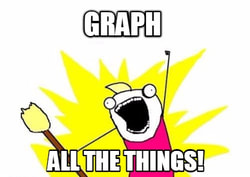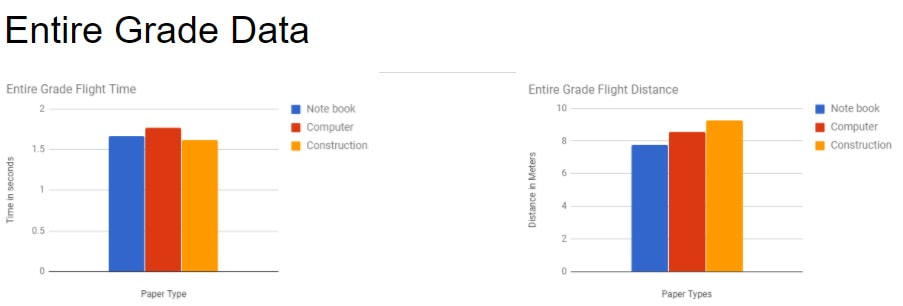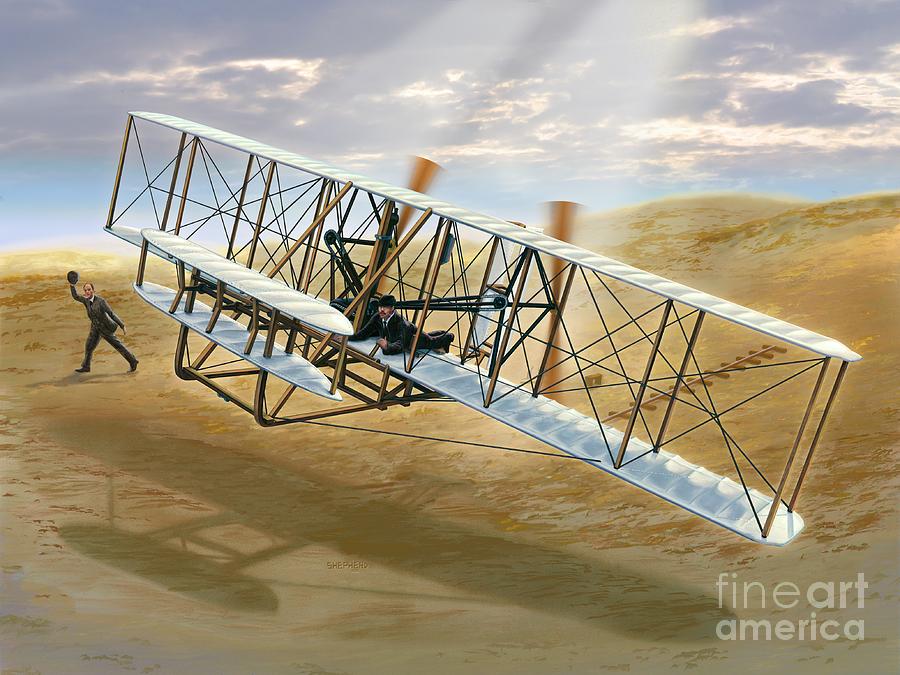 Today students analyzed and interpreted all the graphs from this week's experiment (which were generated with 1,056 data points!). Students also wrote conclusions to their lab reports and shared them with the class. We discussed how graphs tell us a story but we are the storytellers and it is up to us to interpret the graph and explain the information it tells us. Our scientific question for this experiment was "Does the mass of a paper airplane affect how far it can fly?" Using the Entire Grade Plane Data, we concluded that yes, mass does have an effect and that in our experiment with notebook, printer, and construction paper, as the mass of the plane increased so did the distance flown. However, there was not a direct relationship between mass and flight time. Although the printer paper flew the second farthest average distance, it had the longest flight time. Possible explanations for this is the printer paper planes flying higher and floating down more slowly. Another explanation students offered was that the printer paper planes rarely flew straight and their curved path kept them in the air a long time. Sometimes those planes landed near the start line after almost completing a circular flight path.
1 Comment
|
AuthorMr. Powell is a High School Science Teacher in Western Colorado. Archives
May 2024
Categories
All
|



 RSS Feed
RSS Feed